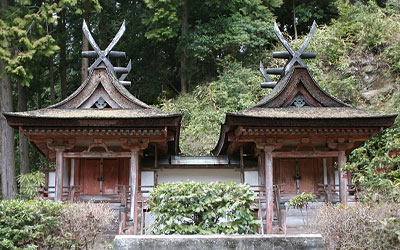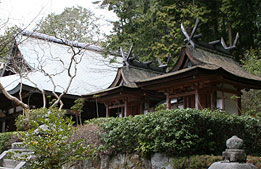| Also read chinju no yashiro. It is
sometimes called chinjudou Αη°; dojidou yn°; gohoudou
μ@° hakusandou R°. A shrine which houses the god, chinju,
who guards a shrine, village, temple, residence, and even the Imperial Palace
which is protected by the twenty-one guardian gods at Ise Jinguu Ι¨_{. Chinju
Αη refers to tutelary gods themselves. However, when a shrine is called chinjudou
this usually refers to a shrine housing a Shinto deity which guards a temple.
Such an arrangement arose from the blending of Shinto and Buddhism, shinbutsu
shuugou _§K, which actually began as early as the Nara period but became
a concentrated endeavor during the 13c. Whether the chinjusha is
built within the temple precincts or outside in the vicinity, it retains
the style of a shrine. It does not take on the appearance of a temple building.
Examples: Kasuga Myoujin tϊΎ_ at Koufukuji » in Nara (Kamakura period).
Enjouji Kasugadou, Hakusandou ’¬tϊ°, R° in Nara. Chouhoji Chinjudou ·ΫΑη° in Wakayama prefecture (Kamakura period). Onjouji Shinra Zenshindou
ιV
P_° Shiga prefecture (1347). |




